Fats and Oils
Fats will be the majority of your daily calorie intake when you are on a ketogenic diet, so choices should be made with your own digestion system in mind. Fats are very important to our bodies, but they can also be dangerous if you are consuming the wrong types of fats. You can see a more in depth post on fats here: The Importance of Fats in a Ketogenic Diet
You want to have a balance between your Omega-3’s and Omega-6’s, so eating things like wild salmon, tuna, trout, and shellfish can help provide a balanced diet of Omega-3’s.
If you don’t like fish, or just prefer not to eat it, I suggest taking a small fish oil supplement. You can also take krill oil for Omega-3’s if you are allergic. If you want to know more about essential fatty acids and omegas on a ketogenic diet, you can visit: Essential Fatty Acids: Omega 3 and Omega 6
Saturated and monounsaturated fats such as butter, macadamia nuts, avocado, egg yolks, and coconut oil are more chemically stable and less inflammatory to most people, so they are preferred.Fats and oils can be combined in a number of different ways to add to your meals – sauces, dressings, or just simple topping off a piece of meat with butter.
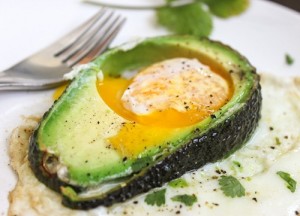
Try to avoid any hydrogenated fats, such as margarine, to minimize your trans fat intake. There have been studies linking it to higher chances of coronary heart disease. If you’re using vegetable oils (olive, soybean, flax, or safflower) choose the “cold pressed” options if they are available.
If you tend to fry things up, try to go after non-hydrogenated lards, beef tallow, ghee, or coconut oil, since they have higher smoke points than other oils. This allows less oxidization of the oils, which means you get more Essential Fatty Acids.
Keep an eye on your intake for nut or seed based foods, as they can be quite high in inflammatory Omega-6’s – these include things like almonds, walnuts, pine nuts, sunflower oil and corn oil.
Some ketogenic diet foods that are great for fats and oils (organic and grass-fed sources are preferred):
- Avocado
- Beef tallow
- Butter
- Chicken Fat
- Ghee
- Non-hydrogenated Lard
- Macadamia Nuts
- Mayonnaise (watch out for added carbs)
- Olive Oil
- Coconut Oil
- Coconut Butter
- Red Palm Oil
- Peanut Butter
Protein
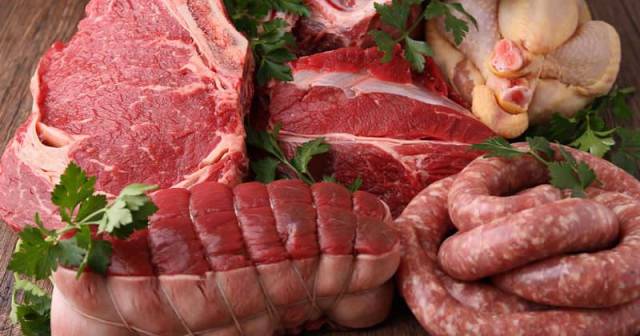
Your best bet when it comes to protein is choosing anything organic or grass fed, and using free-range eggs. This will minimize your bacteria and steroid hormone intake.
- Fish. Preferably eating anything that is caught wild like catfish, cod, flounder, halibut, mackerel, mahi-mahi, salmon, snapper, trout, and tuna.
- Shellfish. Clams, oysters, lobster, crab, scallops, mussels, and squid.
- Whole Eggs. Try to get them free-range from the local market if possible. You can prepare them in a number of different ways like fried, deviled, boiled, poached, and scrambled.
- Meat. Beef, Veal, Goat, Lamb, and other wild game. Grass fed is preferred as it has a better fatty acid count.
- Pork. Pork loin, pork chops, and ham. Watch out for added sugars in ham.
- Poultry. Chicken, Duck, Quail, Pheasant. Free range or organic is the best choice here if possible.
- Bacon and Sausage. Check labels for anything cured in sugar, or if it contains extra fillers.
- Peanut Butter. Go for natural peanut butter, but be careful as they have high counts of Omega-6’s and carbohydrates. Try to opt for macadamia nut butter if you can.
2.9 7.7 6.7 7.2 7.1 7.6 8.8 7.8 4.3 3.5 3.5 5.6 6.4 7 7.3 6.7 6.2 6.8 8.5 8.4 8
| Ketogenic Diet Protein Source | Calories | Fats (g) | Net Carbs (g) | Protein (g) |
| Bacon, 1 slice (~ 8g), baked | 44 | 3.5 | ||
| Beef, Sirloin Steak, 1 ounce, broiled | 69 | 4 | ||
| Beef, Ground, 5% fat, 1 ounce, broiled | 44 | 1.7 | ||
| Beef, Ground, 15% fat, 1 ounce, broiled | 70 | 4.3 | ||
| Beef, Ground, 30% fat, 1 ounce, broiled | 77 | 5.1 | ||
| Beef, Bottom Round, 1 ounce, roasted | 56 | 2.7 | ||
| Chicken, white meat, 1 ounce | 49 | 1.3 | ||
| Chicken, dark meat, 1 ounce | 58 | 2.8 | ||
| Egg, 1 large, 50 g | 72 | 4.8 | 0.4 | 6.3 |
| Fish, Raw, Cod, 1 ounce | 20 | 0.1 | ||
| Fish, Raw, Flounder, 1 ounce | 20 | 0.6 | ||
| Fish, Raw, Sole, 1 ounce | 20 | 0.6 | ||
| Fish, Raw, Salmon, 1 ounce | 40 | 1.8 | ||
| Ham, smoked, 1 ounce | 50 | 2.6 | ||
| Hot dog, beef, 1 ounce | 92 | 8.5 | 0.5 | 3.1 |
| Lamb, ground, 1 ounce, broiled | 80 | 5.6 | ||
| Lamb chop, boneless, 1 ounce, broiled | 67 | 3.9 | ||
| Pork chop, bone-in, 1 ounce, broiled | 65 | 4.1 | ||
| Pork ribs, ribs, 1 ounce, roasted | 102 | 8.3 | ||
| Scallops, 1 ounce, steamed | 31 | 0.2 | 1.5 | 5.8 |
| Shrimp, 1 ounce, cooked | 28 | 0.1 | ||
| Tuna, 1 ounce, cooked | 52 | 1.8 | ||
| Turkey Breast, 1 ounce, roasted | 39 | 0.6 | ||
| Veal, roasted, 1 ounce | 42 | 1 |
Vegetables
On a ketogenic diet, try to go after vegetables that are grown above ground and are leafy greens. If you can, opt for organic as there’s less pesticide residues, but if you can’t then don’t worry. Studies show that organic and non-organic vegetables still have the same nutritional qualities.
To see a full list of low carb vegetables you can view my post here: Best Low Carb Vegetables
1.50.01 0.30.7 10.2 10.2 1.30.5 2.10.3 0.80.2 0.40.2 3.90.7 2.81.5 2.90.3 2.10.3 0.80.3
| Ketogenic Diet Vegetable Source | Calories | Fats (g) | Net Carbs (g) | Protein (g) |
| Asparagus, cooked, 1 ounce | 6 | 0.1 | 0.6 | 0.7 |
| Avocado, 1 ounce | 47 | 4.4 | 0.6 | 0.6 |
| Broccoli, chopped, cooked, 1 ounce | 10 | 0.1 | 1.1 | 0.7 |
| Carrots, baby, 1 ounce, raw | 10 | |||
| Cauliflower, chopped, cooked, 1 ounce | 7 | 0.1 | 0.5 | 0.5 |
| Celery, 1 ounce, raw | 5 | |||
| Cucumber, 1 ounce, raw | 4 | |||
| Garlic, 1 clove (3 grams) | 4 | |||
| Green beans, cooked, 1 ounce | 10 | 0.1 | 1.3 | 0.5 |
| Mushrooms, button, 1 ounce, raw | 6 | 0.2 | 0.6 | 0.9 |
| Onion, green, 1 ounce, chopped, raw | 9 | |||
| Onion, white, 1 ounce, chopped, raw | 11 | |||
| Bell Pepper, Green, 1 ounce, raw | 6 | |||
| Pickles, dill, 1 ounce | 3 | |||
| Romaine lettuce, 1 ounce | 5 | 0.1 | 0.3 | 0.4 |
| Butterhead lettuce, 1 ounce | 4 | 0.06 | 0.3 | 0.4 |
| Shallots, raw, 1 ounce | 20 | |||
| Snow peas, 1 ounce, cooked | 24 | |||
| Spinach, 1 ounce, raw | 7 | 0.1 | 0.4 | 0.8 |
| Squash, Acorn, baked, 1 ounce | 16 | |||
| Squash, Butternut, baked, 1 ounce | 11 | |||
| Squash, Spaghetti, 1 ounce, cooked | 8 | 0.1 | 1.4 | 0.2 |
| Tomato, raw, 1 ounce | 5 |
Dairy Products
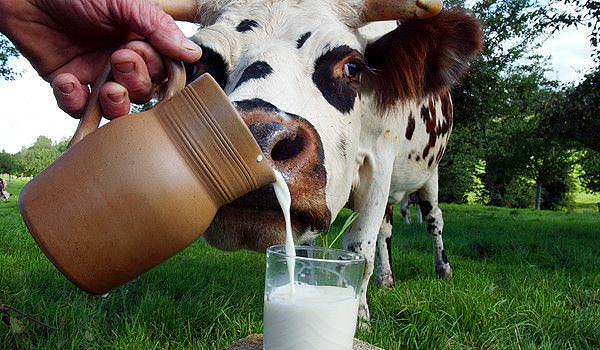
Raw and organic milk products are preferred here. Choose full fat everything over low fat or fat free.
- Heavy Whipping Cream
- Hard and soft cheeses – (Cheddar, Mozzarella, Cream Cheese, Marscapone Cheese, etc.)
- Sour Cream
- Cottage Cheese
1.51
| Ketogenic Diet Diary Source | Calories | Fats (g) | Net Carbs (g) | Protein (g) |
| Buttermilk, whole, 1 ounce | 18 | 0.9 | 1.4 | 0.9 |
| Cheese, Blue, 1 ounce | 100 | 8.2 | 0.7 | 6.1 |
| Cheese, Brie, 1 ounce | 95 | 7.9 | 0.1 | 5.9 |
| Cheese, Cheddar, 1 ounce | 114 | 9.4 | 0.4 | 7.1 |
| Cheese, Colby, 1 ounce | 110 | 9 | 0.7 | 6.7 |
| Cheese, Cottage, 2%, 1 ounce | 24 | 0.7 | 1 | 3.3 |
| Cheese, Cream, block, 1 ounce | 97 | 9.7 | 1.1 | 1.7 |
| Cheese, Feta, 1 ounce | 75 | 6 | 1.2 | 4 |
| Cheese, Monterey Jack, 1 ounce | 106 | 8.6 | 0.2 | 7 |
| Cheese, Mozzarella, whole milk, 1 oz | 85 | 6.3 | 0.6 | 6.3 |
| Cheese, Parmesan, hard, 1 ounce | 111 | 7.3 | 0.9 | 10.1 |
| Cheese, Swiss, 1 ounce | 108 | 7.9 | 1.5 | 7.6 |
| Cheese, Marscapone, 1 ounce | 130 | 13 | 1 | 1 |
| Cream, half-n-half, 1 ounce | 39 | 3.5 | 1.3 | 0.9 |
| Cream, heavy, 1 ounce | 103 | 11 | 0.8 | 0.6 |
| Cream, Sour, full fat, 1 ounce | 55 | 5.6 | 0.8 | 0.6 |
| Milk, whole, 1 ounce | 19 | 1 | 1.5 | 1 |
| Milk, 2%, 1 ounce | 15 | 0.6 | 1.5 | 1 |
| Milk, skim, 1 ounce | 10 |
Nuts and Seeds
Nuts and seeds are best when they are roasted to remove any anti-nutrients. Try to avoid peanuts if possible, as they are actually legumes which are not highly permitted in the ketogenic diet food list.
- Macadamias, walnuts and almonds are the best in terms of your carb count and can be eaten in small amounts.
- Cashews and pistachios are higher in carbs, so make sure you track these carefully.
- Nuts are high in Omega-6 Fatty Acids, so try to be careful with over consumption.
- Nut and seed flours, such as almond flour and milled flax seed are great to substitute for regular flour. This means baking can be done in moderation.
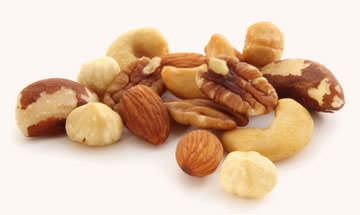
13 7 7
| Ketogenic Diet Nuts/Seed Source | Calories | Fats (g) | Net Carbs (g) | Protein (g) |
| Almonds, raw, 1 ounce | 170 | 15 | 3 | 6 |
| Brazil Nuts, raw, 1 ounce | 186 | 19 | 1 | 4 |
| Cashews, raw, 1 ounce | 160 | 13 | 7 | 5 |
| Chestnuts, raw, 1 ounce | 55 | |||
| Chia Seeds, raw, 1 ounce | 131 | 10 | ||
| Coconut, dried, unsweetened, 1 ounce | 65 | 6 | 2 | 1 |
| Flax Seeds, raw, 1 ounce | 131 | 10 | ||
| Hazelnuts, raw, 1 ounce | 176 | 17 | 2 | 4 |
| Madadamia Nuts, raw, 1 ounce | 203 | 21 | 2 | 2 |
| Peanuts, raw, 1 ounce | 157 | 13 | 3 | 7 |
| Pecans, raw, 1 ounce | 190 | 20 | 1 | 3 |
| Pine Nuts, raw, 1 ounce | 189 | 20 | 3 | 4 |
| Pistachios, raw, 1 ounce | 158 | 13 | 5 | 6 |
| Pumpkin Seeds, raw, 1 ounce | 159 | 14 | 1 | 8 |
| Sesame Seeds, raw, 1 ounce | 160 | 14 | 4 | 5 |
| Sunflower Seeds, raw, 1 ounce | 150 | 11 | 4 | 3 |
| Walnuts, raw, 1 ounce | 185 | 18 | 2 | 4 |
Beverages
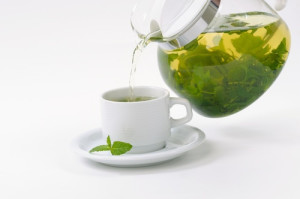
The ketogenic diet has a natural diuretic effect, so dehydration is common for most people starting out. If you’re prone to urinary tract infections or bladder pain, you have to be doubly prepared.Those 8 glasses of water we are supposed to drink a day? We suggest drinking those, and then some. Water plays a substantial role in our body (considering it’s made up of 2/3 water), and it’s extremely important to keep hydrated.
Drink liquids day and night, drink it like it’s going out of fashion.
- Water, water, water. Drink plenty.
- Coffee
- Tea (Herbal and non)
- If needed, you can get flavor packets such as crystal lite, but be careful with these as they do use sweeteners and can contain carbs.
- specialty items
- cooking accessories
- kitchen products
- supplement necessities
Sweeteners
Staying away from anything sweet is generally the best bet – it will help curb your cravings to a minimal level, which essentially promotes success on the ketogenic diet. If you have to have something sweet, though, choose an artificial sweetener.
Try to go after liquid sweeteners as they don’t have added binders such as maltodextrin and dextrose which have carbs.
- Stevia, liquid form is preferred
- Sucralose, liquid form is preferred
- Erythritol
- Xylitol
- Monk Fruit
- Agave Nectar (this can get high in carbs, so use with caution)
| Sweetener | Net Carbs (Per 100g) | Calories (Per 100g) |
| Sucralose | ||
| Stevia | 5 | 20 |
| Erythritol | 5 | 20 |
| Xylitol | 60 | 240 |
| Aspartame | 85 | 352 |
Spices
Spices are a tricky part of ketogenic diet foods. Spices have carbs in them, so make sure you are adding them into your counts.Most pre-made spice mixes will have sugars added to them, so make sure you read the nutrition label beforehand to make sure you know what’s inside. Sea salt is preferred over table salt, as it is usually mixed with powdered dextrose.
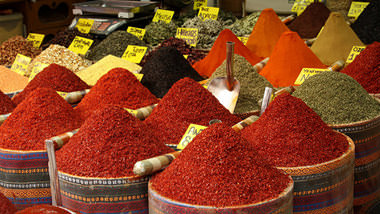
- Sea salt
- Black Pepper
- Basil
- Cayenne Pepper
- Chili Powder
- Cilantro
- Cinnamon
- Cumin
- Oregano
- Parsley
- Rosemary
- Sage
- Thyme
- Tumeric
Things to Watch Out For
There’s always going to be foods that are sneaky when it comes to ketogenic dieting, so I’ve put together a list of things that you should be careful about.
- Spices. As mentioned above, spices do have carbs – but there’s certain ones that have more carbs than others. These include onion powder, cinnamon, garlic powder, allspice, bay leaves, ginger and cardamom.
- Fruit. Most fruit is off the list because of the high sugar contents. Many people still eat berries, but you have to control your portioning with these. Be careful about raspberries, blueberries, and cranberries.
- Tomato Based Products. I wanted to talk about these separately. Plenty of people use tomato sauces and canned diced tomatoes. They still have plenty of sugar in them! Watch your portion sizes on the nutrition labels – food companies are notoriously infamous for messing with serving sizes to make their foods seem “healthier”.
- Peppers. These little buggers are loaded with sugars too – so be careful when you’re using them in stir fry’s and chili. Opt for green peppers, as red and yellow peppers have higher carb counts.
- Diet Soda. Yes, you can drink diet soda, just watch out with the amount you drink. Some people report being knocked out of ketosis after large consumption of artificial sweeteners. Studies also show a link between sugar cravings and artificial sweeteners – so these will make it harder for you to curb those cravings.
- Medicine. Cold medications, cough syrups, flu remedies – these usually contain carbs, and a lot of them at that. Some of the generic over the counter cough medicines contain 20g of carbs PER serving! Be weary of these, as you can get low-sugar/sugar-free alternatives.
Control Your Cravings
So we all know those cravings will hit us out of nowhere from time to time, but does that really mean we have to break our diets just for that one treat? Not at all.
What our bodies are really telling us, is that it’s craving a nutrient – and it can be fulfilled in many different ways than carb-rich treats. Here’s a list of things you should keep in mind:
| Controlling Your Cravings | What You Need | What to Eat |
| Chocolate | Magnesium | Nuts, seeds |
| Sugary Foods | Chromium | Broccoli, Cheese |
| Carbon | Spinach | |
| Phosphorus | Chicken, beef, eggs | |
| Sulphur | Cauliflower, broccoli | |
| Tryophan | Cheese, lamb, liver | |
| Bread, Pasta, Carbs | Nitrogen | High protein meat |
| Oil/Fatty Foods | Calcium | Cheese, Broccoli, Spinach |
| Salty Foods | Chloride | Fish |
| Silicon | Nuts, seeds |
More Ketogenic Foods?
If you’d like even more suggestions on different foods to eat on a ketogenic diet, then you can check out my new article below. I’ve gone ahead and put together a list of common foods people crave and give viable alternatives to those foods. You can have your cake and eat it, too!